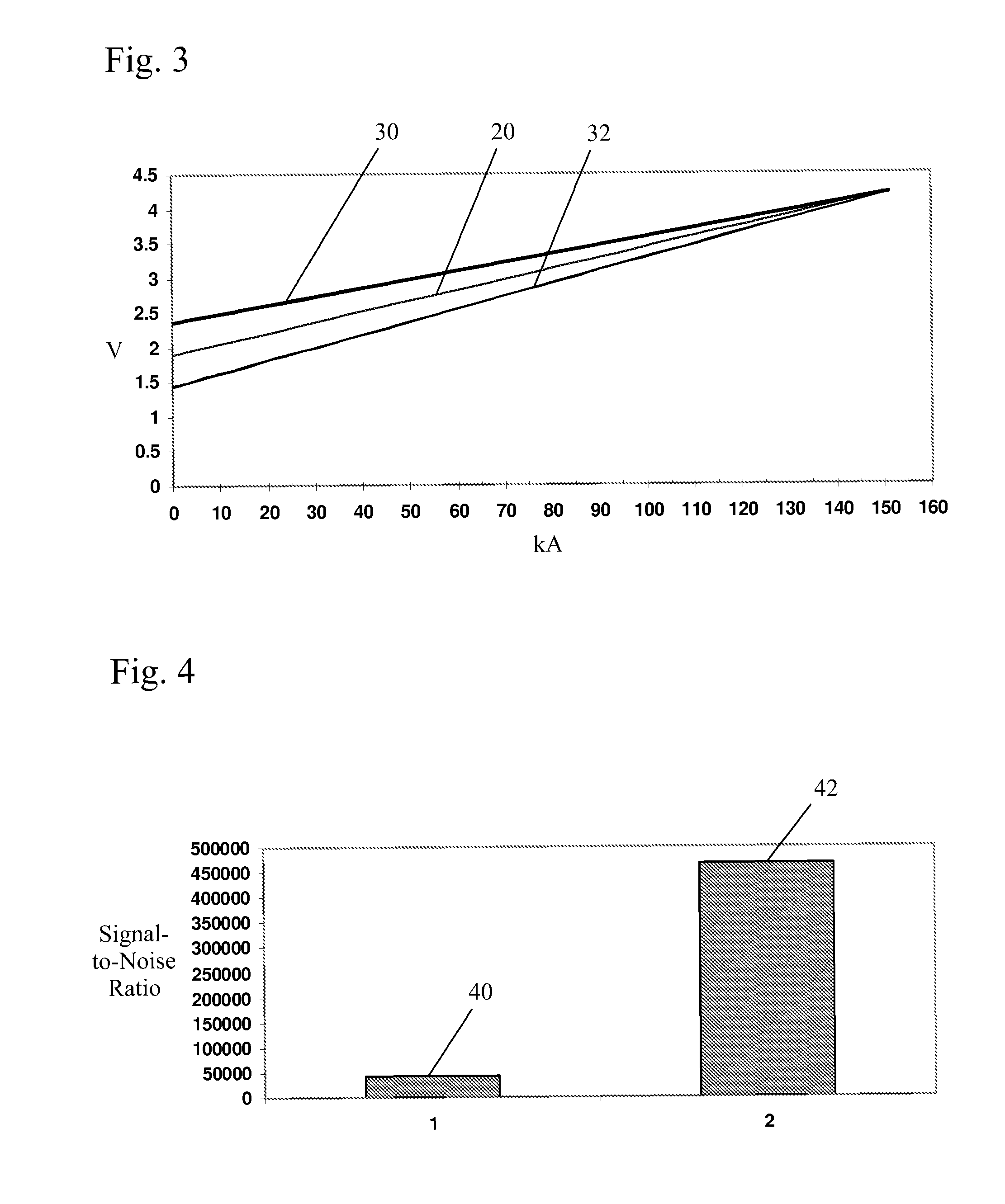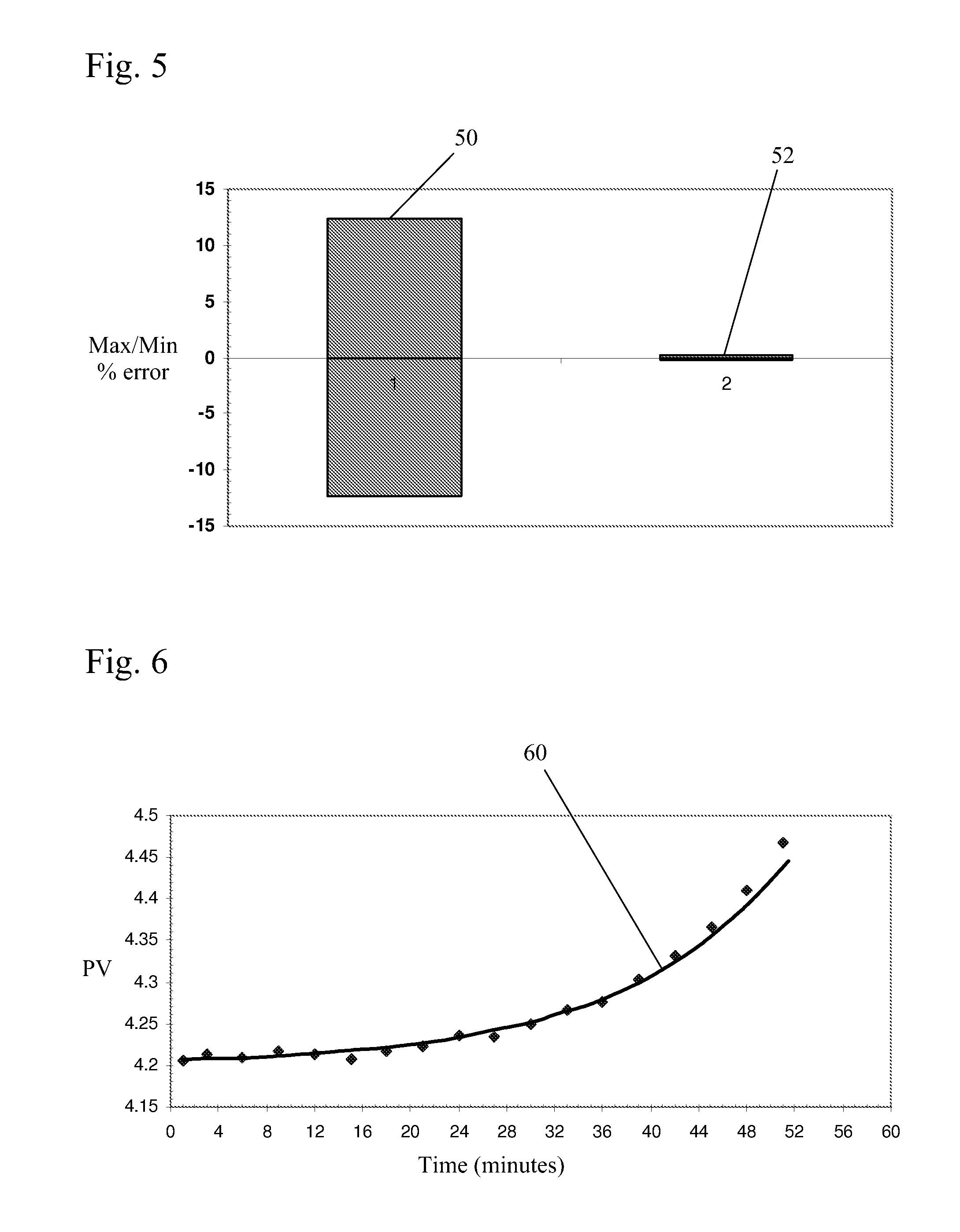Aluminum production process control
a technology of aluminum production and process control, applied in the direction of photography process, auxiliary process, instruments, etc., can solve the problems of compromising process efficiency, affecting the efficiency of process, and large amount of electrical energy required in aluminum production, so as to improve predictive ability, reduce environmental emissions, and improve production efficiency
- Summary
- Abstract
- Description
- Claims
- Application Information
AI Technical Summary
Benefits of technology
Problems solved by technology
Method used
Image
Examples
Embodiment Construction
[0038]In a method of the present invention, a predicted voltage (PV) variable is calculated from sampled potline data to direct the rate of addition of alumina to a pot and determine whether pot voltage adjustments are desirable. This variable is a much more accurate estimator of in situ alumina concentration and in situ bath temperature than the widely used PR variable. As noted above, a cell's PR value is defined as:
PR=(V−I) / A (1)
where I is the arbitrarily estimated intercept (voltage at zero current) of the voltage / amperage linear relationship and is generally treated as a constant. By definition I is an extrapolated value whose accurate experimental determination is not possible in a practical way in an operating potline. An arbitrary value is therefore chosen and the variable is henceforth treated as a constant, which of course is not in accord with the reality of the situation. The value of this chosen constant often varies from cell type to cell type, but most often a value ...
PUM
| Property | Measurement | Unit |
|---|---|---|
| temperatures | aaaaa | aaaaa |
| voltage | aaaaa | aaaaa |
| voltage | aaaaa | aaaaa |
Abstract
Description
Claims
Application Information
 Login to View More
Login to View More - R&D
- Intellectual Property
- Life Sciences
- Materials
- Tech Scout
- Unparalleled Data Quality
- Higher Quality Content
- 60% Fewer Hallucinations
Browse by: Latest US Patents, China's latest patents, Technical Efficacy Thesaurus, Application Domain, Technology Topic, Popular Technical Reports.
© 2025 PatSnap. All rights reserved.Legal|Privacy policy|Modern Slavery Act Transparency Statement|Sitemap|About US| Contact US: help@patsnap.com



